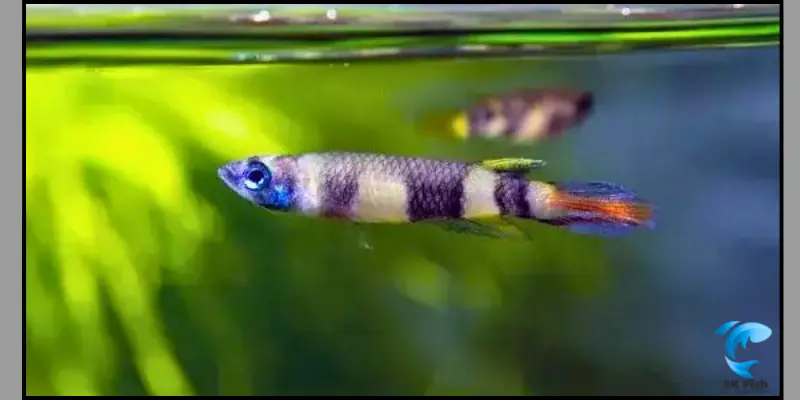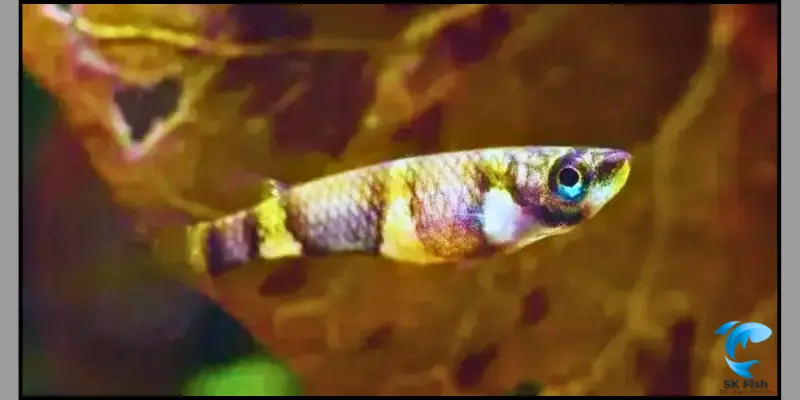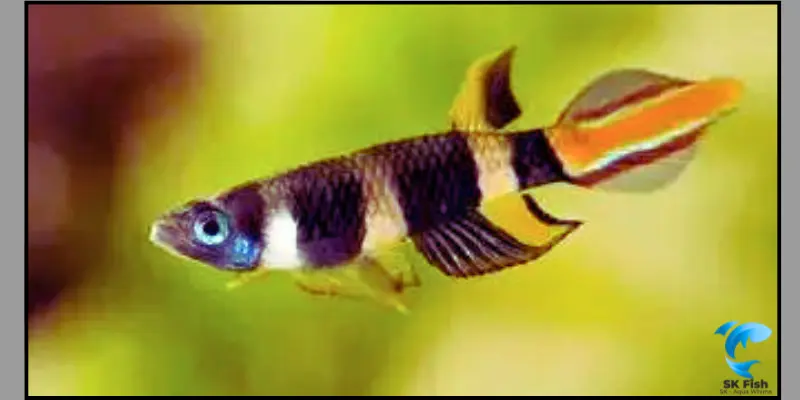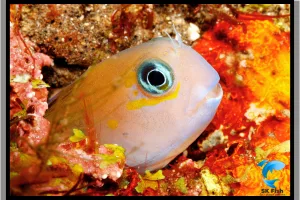Dive Into the Vibrant World of Clown Killifish – Care Guide
Published: 28 Feb 2024
Welcome, fellow enthusiasts! In this blog, we’ll delve into the captivating world of colorful clown killifish, exploring their remarkable traits and offering comprehensive guidance on caring for them in your aquarium. Known for their vibrant hues, killifish is beloved by aquarium enthusiasts worldwide.
Whether you’re seeking to add a splash of color to your aquarium or seeking expert care advice, you’ve come to the right place. Join us as we embark on a journey to discover the wonders of killifish and how to ensure their well-being in captivity.
Let’s dive in!
What is Clown Killifish?
Clown Killifish is a sought-after choice among aquarium enthusiasts seeking to enhance the beauty of their tanks. This freshwater species originates from West Africa and is scientifically known as “Epiplatys Annulatus.”
Renowned for their lively demeanor, Panchax Killifish gracefully navigates their aquarium habitats. Despite their small size, these fish exhibit a stunning array of colors, ranging from vibrant reds and oranges to striking electric blues and yellows.

Common Names
Clown Killifish are known by various names that reflect their vibrant colors and distinct body features. Below are some common names used to describe these captivating fish:
- Clown Killi
- Rocket Killifish
- Banded Panchax
- Clown Panchax
- Rocket Panchax
Weight and Size
Killifish are known for their small size, typically reaching lengths of up to 1.5 inches. Because of their diminutive stature, they are well-suited for small tanks or aquariums. In terms of weight, they are very lightweight.
Lifespan and Reproduction
Unfortunately, our vibrant companions have a relatively short lifespan, typically 2 to 3 years in captivity due to various environmental factors.
Clownfish boasts a unique reproductive strategy, being egg layers rather than giving birth to live young. The mating ritual begins with the male Clown Killifish courting the female through elaborate swimming displays.
Once courtship is successful, the female lays her eggs, which are then externally fertilized by the male. These eggs are typically deposited in shallow bodies of water, such as puddles. Following fertilization, the eggs hatch in just a few days, marking the beginning of the Killifish’s life cycle.
Aquarium Care Guide for Clown Killifish
Ensuring essential care and providing a suitable environment with a proper diet is crucial for the longevity and well-being of Clown Killies. A comprehensive care guide is essential to maintain the health of these colorful fish. Let’s delve into the essential care guide for Clown Killifish.

Tank Size
Due to their small size, Killifish are well-suited for smaller tanks. A tank size ranging from 5 to 10 gallons is sufficient to accommodate these fish. However, the ideal tank size for optimal comfort and ample swimming space is 10 gallons. Providing a larger tank ensures a suitable environment for Rocket Killifish to thrive.
Tank Decor
Tank decoration plays a crucial role in providing a natural and stimulating environment for Clown Killifish. To create an ideal habitat, consider using substrates such as sand to replicate their natural surroundings. Additionally, incorporating live plants, rock caves, and driftwood enhances the aesthetics of the tank while providing essential hiding spots for the killifish.
Water Parameters
Maintaining optimal water parameters is crucial for the well-being of Clown Killifish. These fish thrive in cooler water temperatures, typically ranging from 18°C to 24°C.
Additionally, they prefer slightly acidic to neutral water conditions, with a pH level between 5 to 7 and a dH of up to 7 degrees. Regular monitoring of water parameters and performing partial water changes are essential practices to keep Clown Killies healthy and thriving.
Utilizing a gentle filtration system, such as a sponge filter, helps maintain water quality and ensures a conducive environment for these delicate fish.
Tank Mates
Clown Killi are known for their peaceful nature and are compatible with a variety of non-aggressive and small fish species. Additionally, other compatible tankmates for Clown Killifish include…
| Non-Aggressive species |
|---|
|
An important consideration is the male-to-female ratio when keeping Clown Killifish. It’s advisable to have one male Clown Killifish for every two or three female counterparts. Additionally, housing a group of Killifish together in one tank offers benefits by simulating their natural environment, fostering a more harmonious social dynamic among the fish.

Breeding Behavior
After the female Rocket Killifish releases her eggs, the male fertilizes them and may take on the role of protecting the eggs from potential threats in the environment. Once hatched, the fry consume their yolk sacs and require specialized foods for further nourishment.
A heavily planted and well-decorated aquarium provides an optimal environment for the fry to grow and develop rapidly.
With proper care and a balanced diet, Clown Killifish fry can reach sexual maturity in just a few months, showcasing its fast growth rate under favorable conditions.
Diet for Clown Killifish
These species are small in size and have small mouths – killies are omnivorous species. It’s crucial to provide a diet of high-quality food that includes both protein-rich and plant-based foods. Some recommended diets for killies are listed below:
| Diet |
|---|
|
Conclusion
In summary, this post has provided valuable insights into clown killifish, covering various aspects such as their different names, weights, sizes, lifespans, and reproduction. Additionally, we delved into essential aquarium setups including tank decoration, unique breeding behavior, and dietary requirements. Clown killi, despite their small size, is a popular choice for aquarium enthusiasts. We trust this post will serve as a helpful guide for those looking to care for clown killifish effectively.
FAQs
How many clown killifish kept together?
Clown killifish are generally peaceful creatures, but they may exhibit aggression if there is an imbalance of males and females in the tank. To maintain harmony, it’s advisable to keep one male killifish with two or three female counterparts. This ensures a more balanced social dynamic and minimizes the likelihood of aggressive behavior.
Are clown killifish hard to keep?
Clown killifish are generally regarded as easy to care for, making them suitable for both experienced aquarists and beginners alike. However, there are some key points to consider to ensure their well-being. For more detailed guidance, refer to the information provided in this blog post.
Will clown Killifish jump?
Yes, clown killifish are known for their tendency to jump, especially when they feel stressed or threatened. To prevent any accidents, it’s important to ensure that the aquarium has a secure lid or cover.
Where do clown killifish swim?
Clown killifish, native to West Africa, are predominantly surface-dwellers in captivity. In their natural habitat, they inhabit slow-moving streams and rivers, where they feed on insects.

SK Fish is your trusted source for practical fish care tips and delicious seafood recipes. Our team is dedicated to providing reliable, well-researched content for fishing enthusiasts and home cooks alike.

- Be Respectful
- Stay Relevant
- Stay Positive
- True Feedback
- Encourage Discussion
- Avoid Spamming
- No Fake News
- Don't Copy-Paste
- No Personal Attacks



- Be Respectful
- Stay Relevant
- Stay Positive
- True Feedback
- Encourage Discussion
- Avoid Spamming
- No Fake News
- Don't Copy-Paste
- No Personal Attacks


![Discover the Truth: How Long Does It Take for Guppies to Breed? [Expert Tips Inside]](https://skfish.com/wp-content/uploads/guppy-how-to-breed-200x133.webp)
![The 7 Best Freshwater Fish for Low Light Tanks [Hassle-Free Setup and Maintenance]](https://skfish.com/wp-content/uploads/best-freshwater-fish-for-low-light-tanks-200x133.webp)
![How to Set Up a Freshwater Fish Tank in 5 Easy Steps [No Experience Needed, Avoid Common Pitfalls]](https://skfish.com/wp-content/uploads/how-to-set-up-a-freshwater-fish-tank-in-5-easy-steps-200x133.webp)
